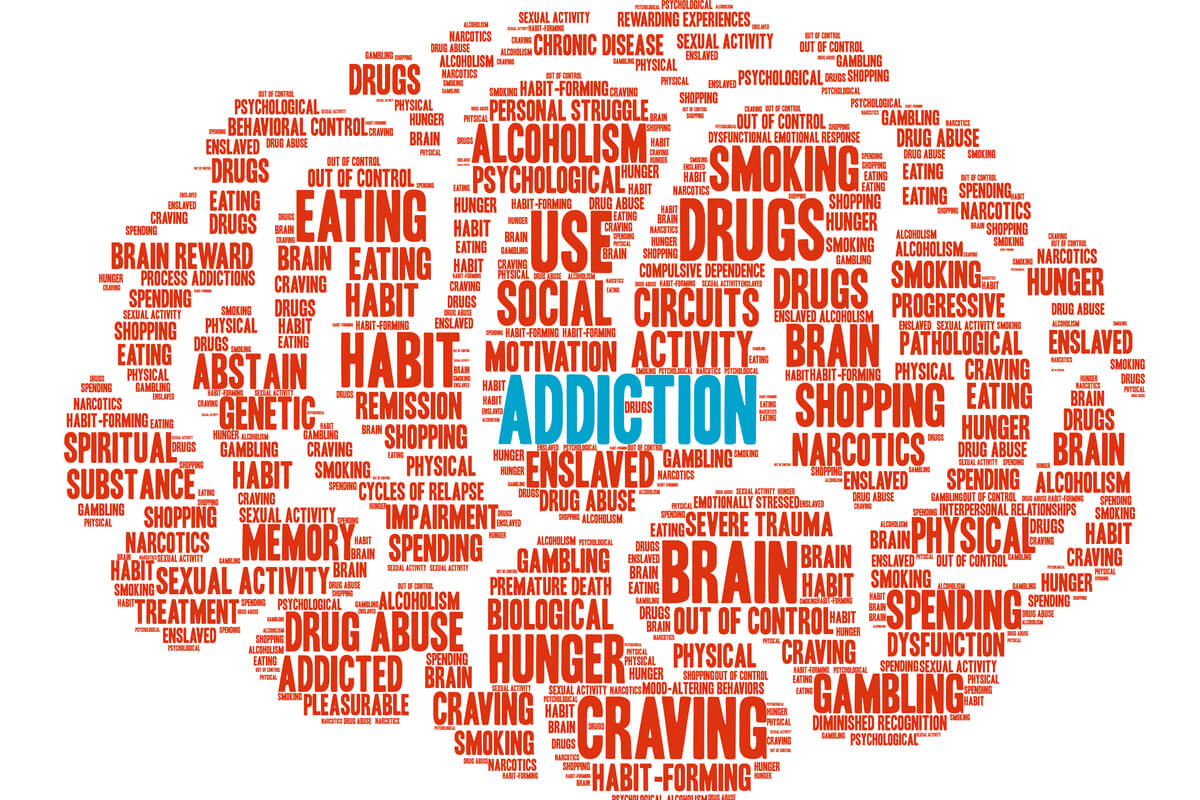
Substance use can have significant negative effects on women’s physical and mental health, as well as their social, economic, and personal lives.
Though men also suffer when living with a drug or alcohol misuse issue, the ways in which substance misuse impacts their lives and how quickly it can take over are significantly different for women when compared to men.
Because of these differences, the screening processes put in place to identify a substance use disorder in women should be proactive and adjusted according to their needs. Additionally, substance use disorder treatment should be able to address the areas in women’s lives that are most deeply impacted by the disorder.
How Substance Use Affects Women
Some specific ways in which substance misuse can affect women include the following:
- Physical health: Substance misuse can lead to a range of physical health problems in women, including liver damage, heart disease, stroke, and a variety of cancers. Substance misuse can also lead to unintended pregnancies and sexually transmitted infections.
- Mental health: Substance use can worsen existing mental health conditions or lead to the development of new ones, such as depression, anxiety, and psychotic disorders.[1] Substance use can also interfere with the effectiveness of mental health treatment.
- Social and economic impact: Substance use can lead to problems with relationships, employment, and financial stability. Women who misuse substances may have difficulty maintaining healthy relationships with their partners, children, and other family members. They may also have problems maintaining employment, or they may be at risk of losing their jobs due to substance misuse.
- Personal impact: Substance use can lead to a range of personal problems, including legal issues, financial problems, and problems with self-esteem and self-worth. Women who misuse substances may also experience a loss of control over their lives and may have difficulty managing their responsibilities.
It is important to note that substance misuse can have different impacts on different women. The severity of these impacts can vary based on a range of factors, including the type of substance misuse, the frequency and duration of use, and the presence of any underlying mental health conditions.
Key Statistics About Substance Use & Women
- According to the Center for Behavioral Health Statistics and Quality, in 2016, about 19.5 million women in the United States over the age of 18 used illegal drugs or used legal substances outside of their prescriptive use in the year prior.[2]
- Between 1999 and 2014, the number of women who delivered babies while living with an active opioid use disorder increased by more than four times, according to the Centers for Disease Control.[3]
- A study published in the Journal of the American Medical Association found that between 2002 and 2017, the use of cannabis among pregnant women in the United States more than doubled.[4]
- Substance use and misuse can turn into substance use disorder more quickly for women as compared to men, potentially as a result of physiological differences, including hormones, according to the National Institute on Drug use.[5]
- Women may be more likely than men to struggle with cravings for different substances while in recovery, especially cocaine and heroin, according to a study published in the journal Drug and Alcohol Dependence.[6]
- Women may also be more likely to relapse during recovery, especially during peak hormonal shifts related to the monthly cycle, according to authors of a study in rats published in the journal Psychopharmacology.[7]
Are Women More Likely to Become Addicted to Substances Compared to Men?
There is evidence to suggest that women may be more vulnerable to developing addiction to certain substances compared to men. This may be due to a variety of factors, including differences in the way that substances are metabolized, differences in brain chemistry and structure, and the presence of underlying mental health conditions.
For example, research has shown that women may develop an addiction more quickly to prescription medications, such as opioids, compared to men. Women may also be more likely to develop a substance use disorder to alcohol and benzodiazepines, which are commonly prescribed for anxiety and sleep disorders.[8]
It is also important to note that women may be more likely to develop substance use disorder as a result of trauma or other stressors, such as physical or sexual misuse. Substance use can serve as a coping mechanism for women who have experienced trauma, and the use of substances can become a way of numbing emotional pain or avoiding difficult emotions.
What Are the Top Causes of Substance Use in Women?
There is no one single cause of substance misuse in women. Substance misuse can result from a complex interplay of factors, including biological, psychological, social, and environmental influences.
Some specific factors that may contribute to substance misuse in women include the following:
- Genetics: Substance use can run in families, and there is evidence to suggest that genetics may factor into the development of addiction. Women who have a family history of substance use may be at increased risk of developing addiction themselves.
- Mental health issues: Women who struggle with mental health conditions, such as anxiety, depression, or post-traumatic stress disorder (PTSD), may be more likely to misuse substances as a way of coping with their symptoms.
- Trauma: Women who have experienced trauma, such as physical or sexual use, may be more prone to misuse substances as a way of numbing the emotional pain or avoiding difficult emotions.
- Stress: Women who are under a lot of stress, whether it be related to work, family, or other personal responsibilities, may be more likely to turn to substances as a way of coping.
- Social and environmental factors: Substance misuse can be influenced by the presence of drugs or alcohol in a person’s social circle or community as well as by easy access to substances.
It is important to recognize that substance misuse can result due to a combination of factors, and that each person’s experience with substance misuse is unique.
Women vs. Men: Does Substance Use Affect Each Group Differently?
Substance use can affect men and women differently in a variety of ways. These are some specific ways in which substance misuse may differ between men and women:
- Prevalence: Substance use is more common among men than women, although the gap has been narrowing in recent years.[9]
- Substance of choice: Men and women may misuse different substances or may have different patterns of substance misuse. For example, men may be more likely to misuse alcohol and illicit drugs, while women may be more likely to misuse prescription medications, such as opioids.
- Physical effects: Substance misuse can have different physical effects on men and women. For example, women may be more likely to experience liver damage as a result of alcohol use or develop the issue more quickly with the same levels of drinking as compared to men.[10]
- Mental health effects: Substance use can have different mental health effects on men and women. Women who misuse substances may be more likely to experience depression and anxiety, while men may be more likely to experience psychosis.
- Social and economic impact: Substance misuse can have different social and economic impacts on men and women. For example, women who misuse substances may be more likely to experience relationship problems or to have difficulty maintaining employment, while men may be more likely to experience legal problems as a result of substance misuse.
What Are the Top Treatment Options for Women Dealing With Substance Use?
There are a range of treatment options available for women who are struggling with substance misuse. Some common treatment options include the following:
- Medications: Certain medications, such as Suboxone, can be used to treat opioid use disorder, while naltrexone can be used to treat opioid and alcohol use disorder. These medications can help to reduce cravings and prevent relapse.
- Behavioral therapies: Behavioral therapies, such as cognitive behavioral therapy (CBT) and contingency management, can help women to identify and change negative thoughts and behaviors that contribute to substance misuse.
- Support groups: Support groups, such as Alcoholics Anonymous or Narcotics Anonymous, can provide a supportive environment for women to share their experiences and gain support from others who are also struggling with substance use disorder.
- Inpatient treatment: With inpatient care, patients stay in a residential treatment facility where women receive round-the-clock care and support. Inpatient treatment can be particularly helpful for women who have severe SUDs, co-occurring disorders, or other complex needs.
- Outpatient treatment: With outpatient treatment, patients attend treatment sessions on a regular basis while continuing to live at home. Outpatient treatment can be a good option for women who have a stable home environment and who need more flexibility to attend to other responsibilities.
The most appropriate treatment option will depend on a woman’s specific needs and circumstances, which means some of these services may not be needed or effective for all women. Most women will find value in a unique combination of these services at different points in their recovery.
Barriers to Addiction Treatment for Women
There are a range of barriers that can prevent women from seeking treatment for substance use disorder.
Some specific barriers that may prevent women from seeking treatment include the following:
- Stigma: Women who struggle with SUD may feel ashamed or stigmatized by their substance misuse, which can prevent them from seeking treatment. This may be an issue that is especially prevalent for Latin women, who are more likely to say that treatment is unnecessary or ineffective than white or black women.[11]
- Limited access to treatment: Women who live in areas with limited access to treatment may have difficulty finding or accessing the help they need. Virtual treatment options, often known as telehealth services, are beginning to counteract this barrier.
- Financial constraints: Women who struggle with substance use disorder may have financial constraints that make it difficult for them to afford treatment.
- Lack of childcare: Women who have children may have difficulty accessing treatment due to a lack of childcare options.
- Trauma: Women who have experienced trauma, such as physical or sexual use, may be hesitant to seek treatment due to fear of reliving their trauma or being triggered by their experiences in treatment.
- Co-occurring mental health conditions: Women who struggle with a SUD may also have co-occurring mental health conditions, such as depression or anxiety, which can make it more difficult for them to admit to the need for treatment or to engage in treatment.
Tips for Getting the Most Out of Addiction Treatment for Women
If you or someone you know is seeking treatment for SUD, there are a few things you can do to increase the chances of success. Try these steps:
- Engage in treatment fully. To get the most out of treatment, it is important to fully engage in the treatment process and to be open to trying new things. This may include participating in therapy sessions, attending support group meetings, and following the treatment plan recommended by a healthcare provider.
- Be honest. Be transparent with your treatment team about your substance misuse and any other concerns or issues you may have, including co-occurring disorders or lifestyle issues that may impede the ability to thrive in recovery. This can help your treatment team to better understand your needs and develop a treatment plan that is tailored to your specific needs.
- Take care of yourself. To get the most out of treatment, it is important to take care of yourself physically and emotionally. This may include eating a healthy diet, getting enough rest, and engaging in activities you enjoy.
- Seek support. Addiction treatment can be challenging, and it is important to seek support from your treatment team, friends, and loved ones to help you through the process. Remember that this isn’t a process you should undertake alone. Build a support network of people you can turn to when things get challenging.
- Eliminate negative influences. Just as it is a good idea to surround yourself with supportive people in recovery, it is just as important to cut off friendships or connections with people who continue to use substances, do not actively support you in recovery, or cause high levels of emotional distress that may make it difficult for you to stay focused on recovery.
- Stay engaged in recovery long-term. If your treatment program ends, it is important to continue to engage in activities that support your recovery, such as attending support group meetings and working with a therapist or counselor for months, if not years. Some people may stay on a treatment plan indefinitely, including medications for substance use disorders, to support their ongoing recovery.
Overall, it is important to be open to the treatment process and to work with your treatment team to develop a plan that works for you. As you progress in recovery, your treatment plan may change. If something isn’t working for you, it doesn’t mean that treatment doesn’t work. It just means that you might need a change in your treatment approach.
With the right support and resources, it is possible to overcome substance misuse and achieve lasting recovery. While recovery isn’t a quick fix, it’s worth the time and effort. The end result is a happier, healthier, and more fulfilling life in recovery.

Reviewed By Peter Manza, PhD
Peter Manza, PhD received his BA in Psychology and Biology from the University of Rochester and his PhD in Integrative Neuroscience at Stony Brook University. He is currently working as a research scientist in Washington, DC. His research focuses on the role ... Read More
- Mental Health and Substance Use Co-Occurring Disorders. MentalHealth.gov https://www.mentalhealth.gov/what-to-look-for/mental-health-substance-use-disorders March 2022. Accessed December 2022.
- Results from the 2016 National Survey on Drug Use and Health: Detailed Tables. Substance Abuse and Mental Health Services Administration Center for Behavioral Health Statistics and Quality. https://www.samhsa.gov/data/sites/default/files/NSDUH-DetTabs-2016/NSDUH-DetTabs-2016.pdf September 2017. Accessed December 2022.
- Opioid Use Disorder Documented at Delivery Hospitalization — United States, 1999–2014. Morbidity and Mortality Weekly Report. Centers for Disease Control and Prevention. https://www.cdc.gov/mmwr/volumes/67/wr/mm6731a1.htm?s_cid=mm6731a1_w August 2018. Accessed December 2022.
- Self-Reported Medical and Nonmedical Cannabis Use Among Pregnant Women in the United States. Journal of the American Medical Association. https://jamanetwork.com/journals/jama/article-abstract/2736582 June 2019. Accessed December 2022.
- Substance Use in Women. National Institute on Drug Abuse. https://nida.nih.gov/publications/drugfacts/substance-use-in-women. January 2020. Accessed December 2022.
- Sex Differences in Cocaine/Heroin Users: Drug-Use Triggers and Craving in Daily Life. Drug and Alcohol Dependence. https://pubmed.ncbi.nlm.nih.gov/23357742/. January 2013. Accessed December 2022.
- Potentiation of Cocaine-Primed Reinstatement of Drug Seeking in Female Rats During Estrus. Psychopharmacology. https://pubmed.ncbi.nlm.nih.gov/16001116/. October 2005. Accessed December 2022.
- Women More Likely to Experience Drug Addiction. University of Utah. https://healthcare.utah.edu/the-scope/shows.php?shows=0_q1bb1c83. May 2018. Accessed December 2022.
- Sex and Gender Differences in Substance Use. National Institute on Drug Abuse. https://nida.nih.gov/publications/research-reports/substance-use-in-women/sex-gender-differences-in-substance-use. April 2020. Accessed December 2022.
- 3 Physiological Effects of Alcohol, Drugs, and Tobacco. National Center for Biotechnology Information. https://www.ncbi.nlm.nih.gov/books/NBK83244/. 2009. Accessed December 2022.
- Women’s Barriers to Specialty Substance Abuse Treatment: A Qualitative Exploration of Racial/Ethnic Differences. Journal of Immigrant and Minority Health. https://www.ncbi.nlm.nih.gov/pmc/articles/PMC7075735/. August 2020. Accessed December 2022.
Download Our Free Program Guide
Learn about our program, its effectiveness and what to expect
Related articles
Imagine what’s possible on the other side of opioid use disorder.
Our science-backed approach boasts 95% of patients reporting no withdrawal symptoms at 7 days. We can help you achieve easier days and a happier future.









